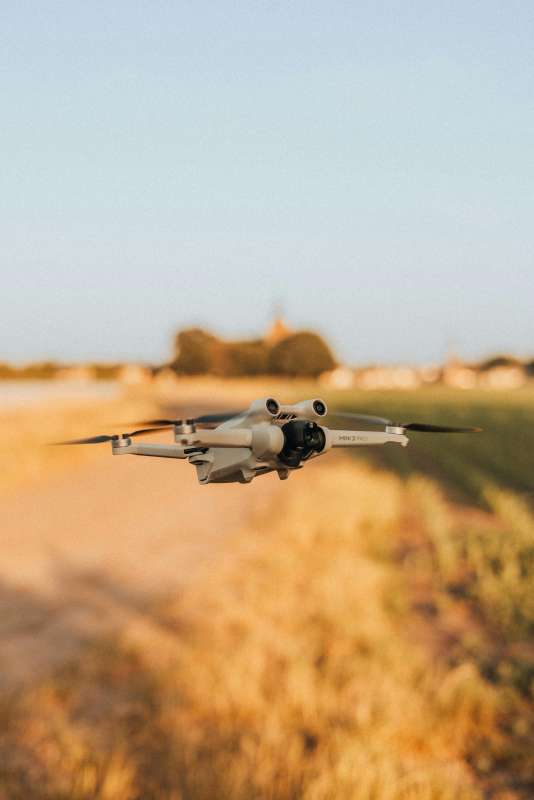Robotics in Agriculture: Automating Farming Processes
Published on: May 10, 2025
Robotics in Agriculture: Transforming the Future of Farming
Robotics is rapidly changing the face of agriculture, introducing a new era of efficiency, precision, and sustainability. As the global population continues to rise and the demand for food production increases, the agricultural sector is under pressure to produce more with fewer resources. Robotics technology offers a solution by automating labor-intensive processes such as planting, irrigation, and harvesting. This not only improves productivity and reduces costs but also addresses critical environmental challenges by enabling smarter resource management.
The Evolution of Agricultural Robotics
The use of machines in agriculture is not a new concept. From the invention of the plow to the widespread adoption of tractors and combine harvesters, mechanization has always played a crucial role in increasing agricultural productivity. However, the integration of robotics represents a significant leap forward. Unlike traditional machinery, modern agricultural robots are equipped with advanced sensors, artificial intelligence, and machine learning capabilities, allowing them to perform complex tasks autonomously and with a high degree of accuracy.
Early agricultural robots were primarily focused on repetitive or hazardous tasks, such as milking cows or spraying pesticides. Over time, advances in robotics, computer vision, and data analytics have enabled the development of robots that can handle more delicate and variable tasks, such as picking fruit without damaging it or selectively applying fertilizers based on real-time soil data. Today, agricultural robotics encompasses a wide range of machines, from small autonomous drones to large self-driving tractors.
Key Applications of Robotics in Agriculture
- Planting and Seeding: Autonomous planting robots are designed to optimize seed placement and depth, ensuring uniform crop emergence and reducing seed wastage. These robots use GPS technology, machine vision, and soil sensors to analyze field conditions and precisely plant seeds at the ideal location and spacing. Some advanced systems can even plant multiple crops simultaneously or adjust planting patterns based on real-time weather and soil data.
- Irrigation and Water Management: Efficient water use is critical in modern agriculture, especially in regions facing water scarcity. Robotic irrigation systems use sensors to monitor soil moisture levels and weather conditions, enabling precise and targeted watering. These systems can be programmed to irrigate only when and where it is needed, reducing water consumption and preventing over-irrigation, which can lead to soil erosion and nutrient runoff.
- Weed and Pest Control: Traditional weed and pest management methods often rely on the widespread application of chemicals, which can harm the environment and human health. Agricultural robots equipped with computer vision and AI can identify and target weeds or pests with high precision, applying herbicides or pesticides only where necessary. Some robots use mechanical methods, such as cutting or pulling weeds, further reducing chemical usage.
- Harvesting and Picking: Harvesting is one of the most labor-intensive tasks in agriculture. Robotic harvesters use sensors and machine learning algorithms to identify ripe produce and pick it gently, minimizing damage. These robots can operate around the clock, increasing efficiency and reducing reliance on seasonal labor. Robotic harvesting is particularly valuable for crops like strawberries, tomatoes, and apples, where manual picking is traditionally required.
- Crop Monitoring and Data Collection: Drones and ground-based robots equipped with cameras and multispectral sensors can monitor crop health, detect diseases, and assess nutrient levels. The data collected is analyzed using AI to provide farmers with actionable insights, enabling timely interventions and optimizing crop yields.
Benefits of Agricultural Robotics
The adoption of robotics in agriculture offers numerous advantages that extend beyond simple labor savings. One of the most significant benefits is increased productivity. Robots can work faster and more accurately than human laborers, allowing farmers to complete tasks such as planting and harvesting in less time and with fewer errors. This leads to higher crop yields and more consistent quality.
Another major benefit is cost reduction. While the initial investment in robotic systems can be substantial, the long-term savings on labor, fuel, and inputs such as water and chemicals can be considerable. By automating repetitive and physically demanding tasks, farmers can allocate their resources more efficiently and focus on higher-value activities.
Robotic systems also contribute to environmental sustainability. Precision agriculture enabled by robotics allows for the targeted application of water, fertilizers, and pesticides, reducing waste and minimizing the environmental impact of farming. For example, robotic sprayers can identify and treat only the affected areas of a field, avoiding blanket applications that can lead to chemical runoff and soil degradation. Similarly, automated irrigation systems help conserve water by delivering it only where and when it is needed.
Furthermore, robotics can help address the growing labor shortage in agriculture. Many countries are experiencing a decline in the availability of farm workers due to aging populations and urban migration. Robots can fill this gap, ensuring that essential agricultural tasks are completed on time and at the required scale.
Challenges and Limitations of Agricultural Robotics
Despite the many advantages, the widespread adoption of robotics in agriculture faces several challenges. One of the primary barriers is the high cost of advanced robotic systems. Small and medium-sized farms may struggle to afford the upfront investment, especially in regions where access to capital is limited. To address this issue, some companies are developing modular and scalable robotic solutions that can be customized to fit different farm sizes and budgets.
Another challenge is the complexity of agricultural environments. Unlike controlled factory settings, farms are subject to variable weather, uneven terrain, and changing crop conditions. Designing robots that can operate reliably in such environments requires sophisticated sensors, robust hardware, and adaptive software. Continuous research and development are needed to improve the resilience and versatility of agricultural robots.
Interoperability and integration with existing farm equipment and management systems also pose challenges. Many farms use a mix of old and new machinery, and ensuring seamless communication between robotic systems and other equipment is essential for efficient operation. Industry standards and open platforms are being developed to facilitate this integration.
Workforce adaptation is another consideration. As robotics becomes more prevalent in agriculture, there is a growing need for workers with skills in technology, data analysis, and robotics maintenance. Training programs and educational initiatives are essential to prepare the next generation of agricultural professionals for a more technologically advanced workplace.
Case Studies: Robotics in Action
Numerous real-world examples illustrate the transformative impact of robotics in agriculture. In California, where labor shortages have threatened the viability of fruit and vegetable farms, robotic strawberry pickers have been deployed to harvest crops efficiently and with minimal waste. These robots use advanced vision systems to identify ripe berries and gently pick them, matching or exceeding the productivity of human workers.
In Australia, autonomous tractors equipped with GPS and AI are used to plant and fertilize crops with remarkable precision. These machines can operate 24 hours a day, navigating large fields without human intervention and adjusting their operations based on real-time data from soil and weather sensors.
European vineyards have adopted robotic weeders that navigate between grapevines, removing weeds mechanically and reducing the need for herbicides. This not only lowers chemical usage but also protects the delicate root systems of the vines, resulting in healthier plants and higher-quality grapes.
In Japan, rice farmers are using robotic transplanters to automate the process of planting rice seedlings. These machines ensure uniform spacing and depth, leading to more consistent crop growth and higher yields. The use of robotics has also enabled farmers to manage larger areas with fewer workers, addressing the challenges posed by an aging rural population.
Environmental Impact and Sustainability
One of the most promising aspects of agricultural robotics is its potential to promote environmental sustainability. Precision agriculture techniques made possible by robotics help farmers use resources more efficiently and minimize their ecological footprint. For example, variable-rate technology enables robots to apply fertilizers and pesticides only where needed, reducing the risk of runoff into waterways and lowering greenhouse gas emissions associated with chemical production and application.
Robotic systems also facilitate the adoption of regenerative agriculture practices, such as no-till farming and cover cropping. By reducing soil disturbance and enabling precise planting and weeding, robots help maintain soil health and biodiversity. Automated monitoring systems provide real-time data on soil moisture, nutrient levels, and crop health, allowing farmers to make informed decisions that support long-term sustainability.
In addition, the use of renewable energy sources to power agricultural robots is becoming more common. Solar-powered drones and electric tractors reduce reliance on fossil fuels and further decrease the carbon footprint of farming operations. As battery technology continues to improve, the range and capabilities of electric agricultural robots are expected to expand.
Future Trends in Agricultural Robotics
The future of robotics in agriculture is marked by rapid innovation and increasing adoption. Several trends are expected to shape the development and deployment of agricultural robots in the coming years. One key trend is the integration of robotics with other digital technologies, such as the Internet of Things (IoT), big data analytics, and cloud computing. These technologies enable real-time data sharing and remote management of robotic systems, making farming operations more efficient and responsive.
Another important trend is the development of collaborative robots, or "cobots," that work alongside human workers to enhance productivity. Cobots can assist with tasks that require a combination of dexterity and judgment, such as pruning or sorting, while freeing up human labor for more complex decision-making activities.
Advances in artificial intelligence and machine learning are also driving the evolution of agricultural robotics. AI-powered robots can learn from experience, adapt to changing conditions, and improve their performance over time. This opens up new possibilities for automating tasks that were previously considered too complex or variable for machines.
As the cost of robotic systems continues to decrease and their capabilities expand, it is likely that adoption will accelerate, particularly among small and medium-sized farms. The development of flexible, modular robots that can be easily customized and upgraded will make advanced technology accessible to a wider range of farmers.
Finally, the growing focus on sustainability and environmental stewardship is expected to drive further innovation in agricultural robotics. Robots that enable precision resource management, support regenerative practices, and reduce the environmental impact of farming will be increasingly valued by both producers and consumers.
The Role of Policy and Industry Collaboration
The successful integration of robotics into agriculture depends not only on technological innovation but also on supportive policies and industry collaboration. Governments can play a key role by providing incentives for the adoption of sustainable technologies, investing in research and development, and supporting education and training programs for the agricultural workforce.
Industry partnerships are essential for advancing the state of the art in agricultural robotics. Collaboration between technology companies, equipment manufacturers, research institutions, and farmers helps ensure that robotic solutions are practical, effective, and tailored to the needs of different agricultural sectors. Open innovation platforms and shared data standards can accelerate the development and deployment of new technologies.
Public acceptance and trust are also important factors. Transparent communication about the benefits and limitations of agricultural robotics, as well as the safeguards in place to protect data privacy and security, will help build confidence among farmers and the wider public.
Conclusion: Robotics as a Catalyst for Agricultural Transformation
Robotics is poised to revolutionize agriculture by automating key processes, increasing efficiency, and promoting sustainability. As the technology continues to evolve, its impact on food production, resource management, and rural livelihoods will only grow. By embracing robotics and fostering collaboration across the agricultural value chain, the sector can meet the challenges of the future and ensure a secure, sustainable food supply for generations to come.










